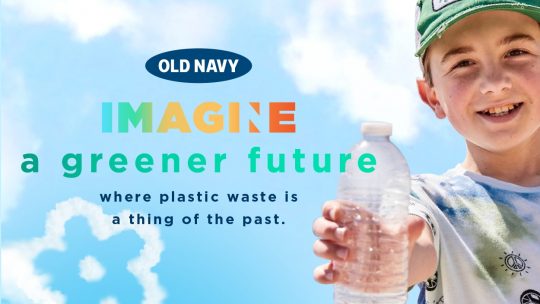
While Earth Day happens once a year, more organizations are taking conservation to heart and including it within their goals and values. Green marketing and messaging is no longer a trendy strategy to gain favor with the public.
Sustainability messaging, however, can get lost in the onslaught of Earth Day promotions and pledges. Making sustainability a continual content goal can prevent it getting slighted on a worthy, but crowded, day.
“Climate change is a 24-hours, 7-days-a-week, 365-days-a-year issue,” said Molly Hendriksen, account director, technology and innovation, at BerlinRosen. “There is no time to waste bringing to light how you and your team are making an impact on one of the most significant challenges of our time.”
Media Relations as Education
Environmental reporting is not new, but with more media outlets hiring full-time climate and environment reporters, it's becoming a trend to recognize. While many of these journalists are well trained, it’s still important to recognize the need for continual education on conservation issues.
Like Hendricksen, Suzanne Pelisson, associate director for PR at Woods Hole Oceanographic Institution (WHOI), said every day is Earth Day at her organization, which is dedicated to ocean research, exploration and education.
“[Full-time environmental beat reporters] open up year-round opportunities to share important stories on new understanding of how our planet works, how humans are impacting it, and the importance of science in developing and evaluating sustainable solutions,” Pelisson said.
In turn, tech breakthroughs mean advocacy groups no longer need to depend on the news hook of new findings or published research for pitches. For example, WHOI can offer media compelling visuals from ocean-roving vehicles, videographers and other sources that help make green stories relevant year round. In addition, it offers reporters interactive experiences, such as joining research expeditions at sea or attending WHOI's one-week Ocean Science Journalism Fellowship.
Telling Stories with Influencers...
As many PR pros know, promoting science stories benefits from an expert storyteller drumming down technical nomenclature to make information more digestible for the public. Think Bill Nye, who not only captured the attention of children with science shows early in his career, but now wins over adults with his enticing explanations, tying science to the everyday. For example, Nye recently partnered with Porsche to explain how its new electric vehicle works.
...and Compelling Data
Telling stories with relatable numbers is a great way to illustrate difficult concepts while differentiating your company with a desired audience.
“It is much more compelling to say something along the lines of, ‘In just three months, customers can reduce carbon emissions by 20 percent, while saving $500 on average,' compared to, ‘Our solution improves efficiency while also saving on costs,'" Hendricksen said. "Unique data means something. Use it whenever you can to demonstrate the impact and value of your solution.”
Xerox provided a great example in a Twitter post this week, celebrating Earth Week, rather than just Earth Day.
Xerox created remanufacturing, and now almost every industry follows this practice, from automotive & aerospace industries to telecommunications & construction. Remanufacturing accomplishes conservation by saving up to 85% of energy required to produce a new product. #EarthWeek pic.twitter.com/Ep4Ciu00wx
— Xerox (@Xerox) April 19, 2021
In addition, avoiding jargon and technical language can make a data-filled green story more relatable to a larger audience.
And always put data into context, which makes it more relatable.
“Something I regularly see climate-focused companies do when describing their impact is saying something like they are saving '250,000 metric tons of CO2' (or other pollutant),” Hendricksen said. “While this figure sounds big, it is abstract and can get lost in translation to anyone who is not steeped in the industry or a mathematical wizard. Instead, think of a comparison with a common example, such as the size of a football field, U.S. states or countries.”
Brand Activations Show Creative Use of Sustainability
And while science serves as the base for conservation and sustainability policies, brands are getting creative promoting activations. Sustainability can take on many forms, from transforming products to eliminating energy and promoting best practices.
For example, Silk Milk uses a therapeutic and educational approach to climate change. Its SilkClimateWarriors.com site helps people overcome anxieties about the changing environment. Visitors can sign up for a 45-minute group eco-counseling session with Debbie C. Sturm, a licensed counselor and professor at James Madison University. The sessions encourage participants to share climate change experiences. In addition, they provide advice on addressing eco-anxiety and other action items.
Another example has Old Navy announcing an elimination of plastic bags by 2023, as well as naming an 11-year-old boy, “Recycle Ryan” Hickman, as its head of FUNcycling. Hickman will work with Old Navy to select youth-led GoFundMe fundraisers focused on sustainability.
A tie-in with this year's 51st Annual Earth Day, Old Navy will fund 51 fundraisers during 2021.
And Nike offers a line of refurbished sneakers, providing a second life for gently-used soles. Nike created a step-by-step guide for consumers to explain the program. The program is just one of the company's zero-carbon initiatives.
“The science is clear,” said NIKE chief sustainability officer Noel Kinder in a blog post. “To protect the future for athletes everywhere (and if you have a body, you are an athlete), everyone needs to do their part in keeping global warming below 1.5°C. To do that, the world’s greenhouse gas emissions need to be cut by half this decade, and we need to reach net-zero by 2050.”
Pelisson believes companies sharing actions and promoting them can help everyone get involved.
“The future of our ocean and planet depends on all of us making changes. And we want people to be educated, inspired and hopeful about the impact they can help make.”
Nicole Schuman is senior editor for PRNEWS. Follow her @buffalogal
